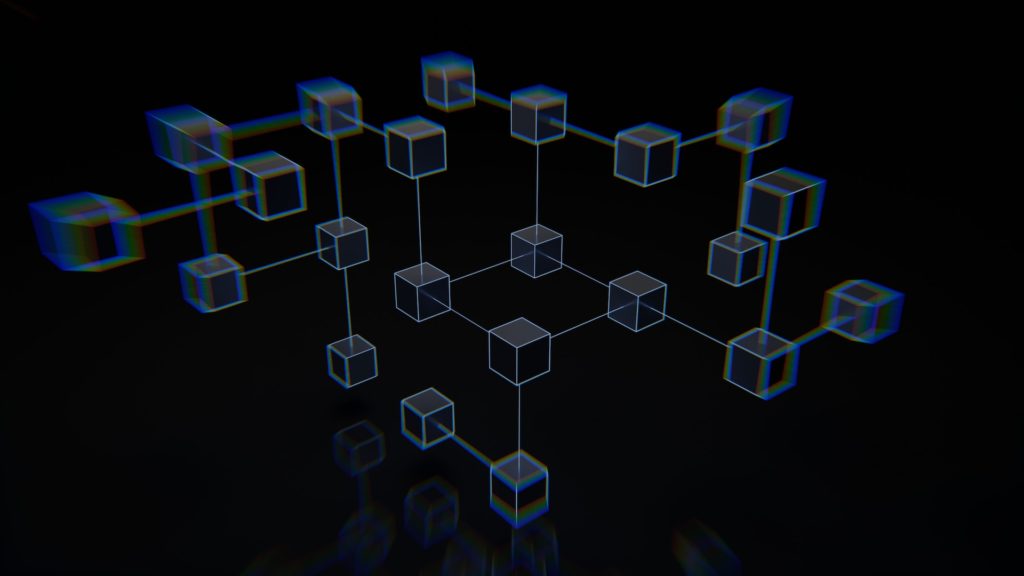Table of Contents
What is Web3 About?
The evolution of the internet over the years has been a mind-boggling phenomenon, especially when looking at the milestones. Open protocols laid the groundwork for the internet ecosystem in its early days.
Web 1.0, the first iteration of the internet, laid the groundwork for some of the most well-known web assets and platforms. In the second era, known as web 2.0, closed protocols introduced centralization while outperforming open protocols in terms of capabilities.
Now, web 3.0, also known as the decentralized web, has emerged as a prominent topic of discussion. One of the primary reasons for focusing on web3 is the value of top web3 use cases. The following post explains the significance of web3 by reflecting on various practical web3 use cases.
Top Examples of Web3 that you Should Know
The characteristics of web3 demonstrate its ability to transform the internet experience for users. Is web3 simply a re-design of UX elements in web applications and services? However, the best web3 use cases tell a different story.
Take a look at the web3 use cases below to see how the concept can be applied to a wide range of applications.
1. Decentralized Autonomous Organizations (DAO)

Decentralized Autonomous Organizations, or DAOs, are one of the most prominent blockchain web3 use cases. They are essentially online communities owned by members of the community. The facility of community governance, which is dependent on member consensus, is an intriguing feature of DAOs. In fact, the highlights of web3 can be found in DAOs with decentralization and autonomy.
DAO rules cannot be changed by a single person or centralized entity. Furthermore, DAOs ensure autonomy by using smart contracts to count votes and make decisions without the need for human intervention. DAOs are a prominent web3 example of on-chain governance if you look closely. Decentralized Autonomous Organizations bring corporate governance to the virtual world by encoding specific policies in smart contracts.
DAOs deserve a spot among the top web3 use cases, particularly because of their potential to provide a governance model for web3 organizations. Surprisingly, the principles of DAOs apply to a wide range of assets and organizations.
2. Decentralized Finance

The following major answer to the question “What is web3 used for?” is decentralized finance, or DeFi. It is a novel idea based on the use of decentralized financial applications. Decentralized applications are general software applications that are linked by a series of smart contracts. Protocols, which are smart contracts in decentralized applications, assist in defining specific functionalities of the applications. The main advantage of DeFi decentralized apps is that they will exist as long as the underlying blockchain does.
Furthermore, dApps built on open blockchain networks allow any computer on the network to participate. Many people have discovered alternatives to traditional financial services thanks to the real-world web3 use cases in DeFi. DeFi, for example, has enabled crypto lending and borrowing, allowing crypto owners to receive loans against their crypto as collateral.
Another important aspect of web3 use cases in DeFi is payment blockchains. DeFi has enabled payment blockchains, which allow for peer-to-peer digital transactions. In fact, DeFi is one of the best web3 use cases, demonstrating a plausible increase in cryptocurrency usage.

The importance of DeFi is highlighted by the ability to conduct low-cost, peer-to-peer, near-instantaneous, and borderless transactions. DeFi payment blockchains may be the best web3 example for enabling access to financial services. Payment blockchains have the potential to significantly improve existing payment systems.
For example, cryptocurrencies can be a valuable asset for distributing aid to people who do not have bank accounts. Furthermore, DeFi uses blockchain to achieve the desired transparency in order to combat abuse, waste, and fraud.
The most exciting aspect of DeFi is that it is transforming the backend of financial technologies. DeFi facilitates the use, access, auditing, upgrading, and development of financial services. DeFi is clearly one of the most important web3 use cases for enabling cost-effective and simple participation in the financial system. At the same time, DeFi uses web3 principles to give consumers complete control over the ownership of finance products.
The DeFi and Web3 Connection
DeFi stands out as a standout among real-world web3 use cases because it offers numerous opportunities for improving financial inclusion. The DeFi and web3 connection is dependent on DeFi services embracing open internet core values. Here are some key points that demonstrate how DeFi and web3 are related.
- Dedication to open-source code
- Open accessibility
- Permissionless
- Lower transaction fees
- Encryption-based privacy and security
- Transparency and accountability in governance
3. Privacy and Digital Infrastructure

Complete transparency is the most prominent issue in existing blockchain networks. Blockchain web3 use cases for improving privacy and digital infrastructure are available. New research in cryptography’s innovative aspects, such as zero-knowledge proofs, enables mathematical proofs of validity without revealing information.
A user, for example, can demonstrate to a website that they know the password without providing the password to the website. As a result, the user’s password would never be stored in the website’s database, ensuring safety from unprecedented attacks. Web3 solutions can ensure plausible improvements in digital infrastructure, ensuring greater privacy.
Digital infrastructure improvements, as one of the best web3 use cases, rely on the protection of users’ personal data. Furthermore, web3 has increased the flexibility for designing applications with enhanced privacy. Given the massive data breaches in web 2.0, data protection is clearly one of the prominent highlights among many web3 use cases. Now, web3 can serve as the ideal foundation for gaining access to a suite of applications designed to improve data security.
Simultaneously, web3 use cases for privacy and digital infrastructure improvements may improve regulatory compliance. Users who are concerned about sharing personal information with a blockchain application or service can benefit from privacy layers. As a result, web3 will undoubtedly play a critical role in easing the path to regulatory compliance in risk-free blockchain networks.
4. Blockchain Games

The most prominent web3 example in real-world applications will draw you to blockchain-based games. The blockchain-based games provide personalized economies in which players have actual ownership of in-game items. The blockchain games are notable answers to the question “What is web3 used for?” because they were the first web3 applications.
Blockchain-based games enable the transfer of in-game objects to other games. Blockchain games have shown a promising glimpse into the future of gaming in their early stages. Blockchain-based games could create entirely new virtual worlds and economies with the help of web3 principles.
The use of decentralized technology to facilitate monetization opportunities for creators demonstrates the significance of blockchain games as one of the top web3 use cases. NFTs are used in blockchain-based games to assign ownership of in-game items such as avatars, skins, tools, experience points, and upgrades. Surprisingly, players can sell NFTs for fiat currency on secondary marketplaces, in addition to the ability to transfer assets between games.
Another notable feature of blockchain-based games in real-world web3 use cases is the play-to-earn models. Axie Infinity is one of the best examples of using web3 principles in the real world with gaming. Many people have found it to be a promising tool for earning cryptocurrency rewards by playing the game.
5. Metaverse

The metaverse is clearly one of the many entries in the best web3 use cases. The metaverse promises an infinite virtual world, a three-dimensional embodied internet in which users can move as digital avatars. Essentially, you will be watching it on the internet rather than through your computer screens.
Many web3 principles are used in the metaverse to provide users with immersive and engaging experiences. The metaverse contains elements of decentralization and creator economies. The metaverse encourages open access to all individuals and gives users complete control over their experiences.
The recognition of metaverse as a top web3 use case is heavily reliant on the promises of an open, shared, and decentralized virtual world. However, the metaverse is still a long way from reality, with only a few hints of the technology appearing on various platforms. Facebook, Microsoft, Epic Games, and a slew of other tech and business titans have recognized the value of web3 principles in various metaverse applications.
6. Creator Economy

While you cannot exactly call creator economy a web3 use case, it is one of the prominent highlights in the web3 landscape. The term “creator economy” refers to emerging creator communities such as developers, artists, and musicians who connect directly with followers and supporters. Web3 principles can be relied on by creators to engage in seamless collaboration without the use of intermediaries.
NFTs, or non-fungible tokens, are one of the major highlights of the creator economy in real-world web3 use cases. Because of the value of uniqueness, the new class of digital assets has soared to unprecedented levels of popularity. Furthermore, high-profile NFT sales have played an important role in empowering creator economies.
The creator economy is one of the best web3 use cases because it allows people who spend a significant amount of time online in various digital spaces to monetize their time. NFTs provide many new monetization opportunities for creators while bypassing traditional gatekeepers. As a result, the creator economy use case of web3 can provide a convenient way for creators to sell their work directly.
Furthermore, followers can obtain exclusive ownership of the creator’s work, increasing their stake in the artists and creators. Another important feature of NFTs in creator economy use cases is the ability to pay royalties. Smart contracts can be used by NFT owners to track secondary sales and earn royalty commissions. Most importantly, NFTs function as verifiable digital assets, paving the way for many other applications beyond creator economies.
Final Words
The final overview of web3 based on the top web3 use cases demonstrates how it can completely change internet experiences. Web3 has a lot in store for the entire world, from DAOs to the metaverse and DeFi. While some web3 use cases have already begun to make an impact, others are still in the works.
DAOs and DeFi are two examples of web3 use cases that are currently being actively implemented. On the other hand, there’s the metaverse, which is still in the works. The various web3 use cases concentrate on the core principles of web3 and how they can solve traditional inefficiencies in data exchange, asset ownership, and financial transactions. Begin learning more about web3 right now to unlock its true potential.
Disclaimer: The opinion expressed here is not investment advice – it is provided for informational purposes only. It does not necessarily reflect the opinion of EGG Finance. Every investment and all trading involves risk, so you should always perform your own research prior to making decisions. We do not recommend investing money you cannot afford to lose.
 English
English Français
Français Español
Español Bahasa Indonesia
Bahasa Indonesia 中文 (中国)
中文 (中国) Русский
Русский Português
Português Deutsch
Deutsch

